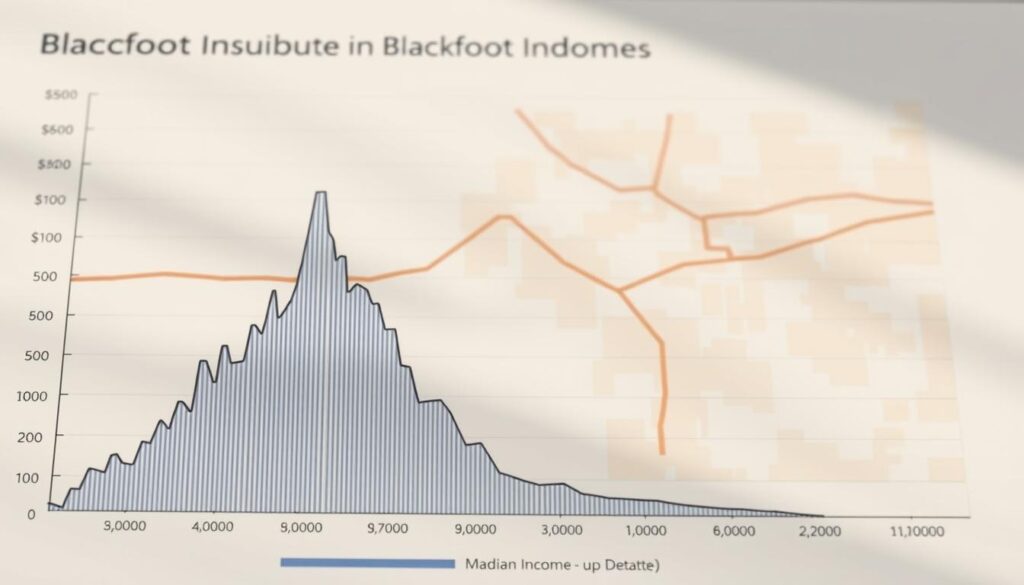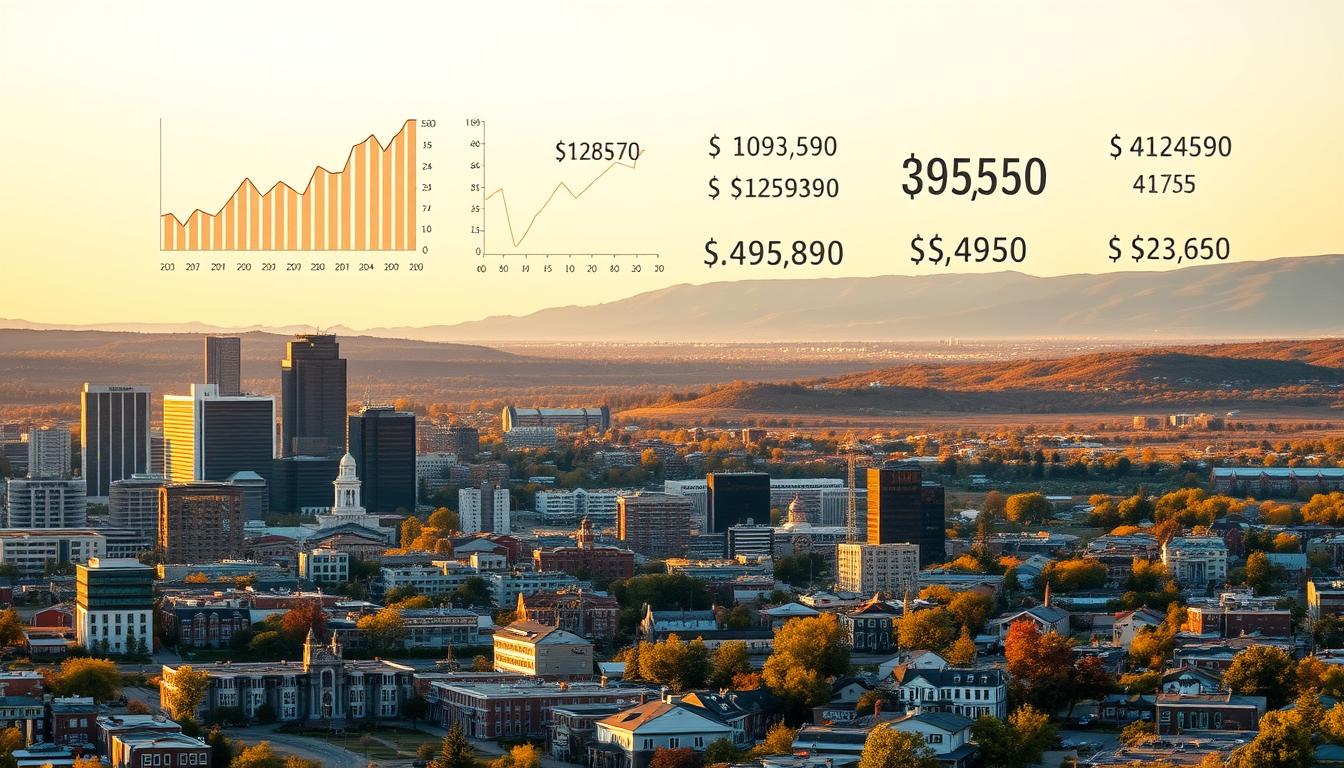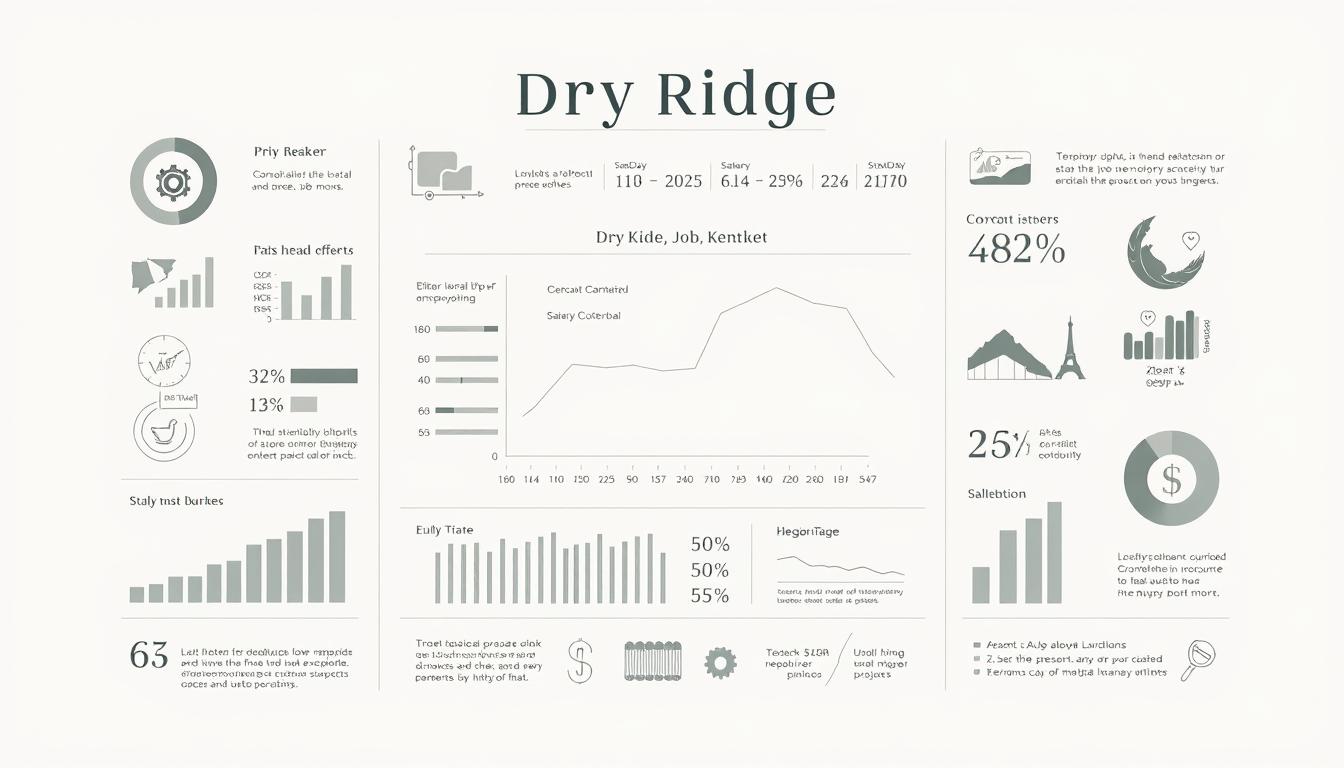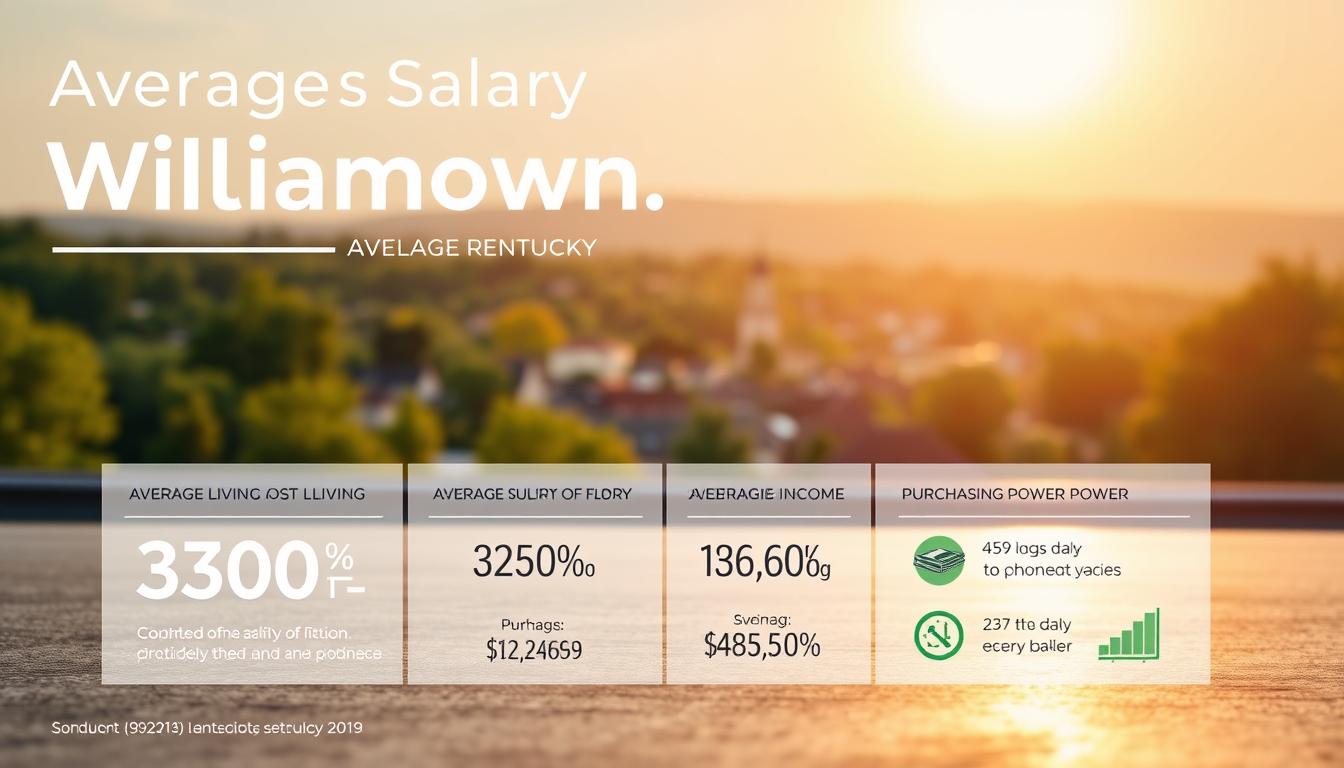Blackfoot’s population grows by 25 new residents every month—a 1.45% annual increase that’s reshaping local job markets. With 13,380 people calling this Idaho city home in 2025, understanding earning potential here could determine your next career move.
Households here bring in $78,853 yearly, while individual earnings average $40,959. The median income sits at $69,091, offering clear benchmarks for financial planning. You’ll find 10.29% of residents face economic challenges, highlighting the importance of strategic career decisions in this growing economy.
RoboApply’s Auto Apply feature lets you target hundreds of roles matching your skills in minutes. Whether you’re exploring healthcare, manufacturing, or education careers, our tools streamline applications while adapting resumes to local employer preferences.
This guide breaks down industry-specific earnings, living expenses, and growth trends. You’ll get actionable data—not generic advice—to make informed choices about your professional future in eastern Idaho.
Key Takeaways
- Blackfoot’s population grows 1.45% yearly, signaling expanding job markets
- Local households earn $78,853 annually with individual incomes at $40,959
- 10.29% poverty rate underscores the need for strategic career planning
- RoboApply’s Auto Apply targets relevant roles across multiple industries
- Industry-specific salary data helps benchmark your earning potential
Understanding Blackfoot's Economic Landscape
This eastern Idaho hub combines tight-knit community dynamics with measurable economic expansion. You’ll find career opportunities shaped by unique demographic patterns and resource distribution across its 6.146 square miles.
City Demographics and Population Growth
Nearly 80% of residents identify as White, while 8.66% represent two or more races. The Native American community accounts for 3.59%, creating diverse workplace environments where cultural competency matters.
With 2,177 people per square mile, employers cluster near residential zones. This density means you can access multiple job sites within 15-minute drives, reducing transportation costs.
Key Economic Indicators
The median age of 35.6 years reveals a workforce balancing experience and adaptability. Census Bureau reports show steady 1.45% annual population growth—a sign employers are expanding teams to meet rising demand.
Younger professionals (34.1 median male age) often pursue roles in tech and manufacturing, while female workers (37.9 median age) dominate healthcare and education sectors. Use RoboApply’s ATS optimizer to highlight skills matching these industry preferences.
Household data shows 10.29% face financial strain, emphasizing the need for salary negotiation tools. Target companies valuing diversity through tailored applications that address local demographic realities.
Exploring the "average salary blackfoot idaho" Data

Blackfoot’s workforce of 5,400 people creates income patterns you can use to benchmark your earnings. The median household income of $69,091 reveals more about typical earnings than the $78,853 average, showing where most residents fall financially.
Married families earn $89,306 annually—over double the $35,554 for non-family households. This gap means your family status impacts financial planning strategies. Use industry-specific income reports to compare your situation with local standards.
Per capita income sits at $40,959, helping you gauge individual earning potential. RoboApply’s AI resume builder tailors your experience to roles paying above this level. Their grammar checker ensures error-free applications that meet employer expectations.
Three steps to leverage this data:
- Compare your target salary to median household levels using local compensation benchmarks
- Customize cover letters with RoboApply’s tools to address income disparities
- Prepare negotiation tactics using their interview coach’s salary discussion scripts
With 1 in 10 households facing financial strain, precise career positioning matters. RoboApply’s ATS optimizer increases visibility for roles matching your income goals while filtering out underpaying opportunities.
Cost of Living and Household Income Analysis
Navigating Blackfoot’s economic environment requires understanding how earnings align with expenses. Household budgets here face unique pressures—the local poverty rate sits 2.4% below the national average, but income gaps reveal hidden challenges.
Median Household and Per Capita Income
Married families earn $89,306 annually—enough to cover basic needs with strategic budgeting. Compare this to non-family households making $35,554-$42,058. Use RoboApply’s job tracker to filter positions offering family-supporting wages between $84,478 and $93,055.
Three financial planning strategies:
- Calculate monthly expenses against median household income ($69,091)
- Prioritize roles with healthcare benefits to offset living costs
- Update your resume using industry-specific templates for higher-paying sectors
Poverty Levels and Socioeconomic Factors
The 10.29% poverty rate masks neighborhood-specific trends. Young professionals often struggle in service roles paying below $35k, while skilled trades workers typically clear $55k. Target employers near schools and medical centers—these areas show stronger wage growth.
RoboApply’s outreach CRM helps you:
- Identify companies with compensation packages covering housing costs
- Track organizations investing in employee development programs
- Auto-send applications before salary negotiation windows close
Pro Tip: Cross-reference poverty data with industry reports to avoid underpaid roles. Focus on sectors where 70%+ workers earn above median household levels.
Industry Salary Trends in Blackfoot
Career success in this growing city depends on strategic industry targeting. Three sectors pay 40%+ above median household earnings, while others offer broader employment access. You’ll need precise tools to navigate these options effectively.

Top-Paying Industries and Employment Data
Mining and energy roles lead local compensation at $103,833 annually—ideal for professionals with technical certifications. Financial services follow at $71,429, requiring skills in risk analysis and client management. Administrative and environmental positions provide stable $62,059 earnings, often with government contracts.
Employment numbers reveal where opportunities cluster:
- 745 people work in health care social assistance—use tailored resume templates for this high-demand field
- Retail trade employs 886 people across entry-level and leadership roles
- Manufacturing positions (633 workers) often include overtime pay options
RoboApply’s ATS optimizer adapts your application materials for each sector’s requirements. Their Chrome extension lets you simultaneously target mining companies and financial firms—saving hours while maximizing income potential.
Focus on industries where 60%+ roles exceed median earnings. Combine RoboApply’s real-time salary filters with employment rate data to prioritize your search efficiently.
Employment Landscape and Job Market Overview
Blackfoot’s 5,400-person workforce operates through diverse business scales that shape career opportunities. The following chart shows how establishments cluster by employee count and industry focus, revealing patterns critical for strategic job hunting.
Major Sectors in the Local Economy
Healthcare and manufacturing employ 32% of workers combined, offering stable roles with advancement potential. Retail trade accounts for 16% of positions, while professional services show steady growth over recent years. Use RoboApply’s job tracker to filter openings in these dominant sectors.
The state’s agricultural roots remain visible through food processing roles, though tech-adjacent positions now grow 18% faster than traditional fields. Recent graduates often find entry points in education (12% of jobs) or administrative services (9%).
Establishment Sizes and Industry Distribution
Companies with 50+ employees provide 44% of local jobs, typically offering comprehensive benefits packages. Smaller firms (under 20 staff) dominate hospitality and construction sectors—ideal for professionals seeking hands-on leadership experience.
Three strategies for leveraging this data:
- Target corporations using RoboApply’s HR-specific resume templates
- Engage small businesses through their outreach CRM’s direct messaging
- Compare salary ranges across company sizes using real-time filters
The chart shows number of establishments per employee bracket, helping you prioritize applications. Households with dual incomes often benefit from targeting mid-sized companies (20-49 employees) that balance growth potential with competitive pay.
Impact of Local Economic Factors on Daily Living

Your daily budget here depends on smart navigation of three key elements: housing access, commuting costs, and regional price comparisons. Over 70% of residents own their homes—a rate exceeding many neighboring parent geographies—which shapes long-term financial strategies for newcomers.
Transportation patterns reveal 84% of workers drove alone to their jobs last year. This creates predictable fuel and maintenance expenses you’ll need to factor into earnings requirements. Use RoboApply’s salary expectation calculator to offset these costs during job negotiations.
Four actionable insights for maximizing income value:
- Housing costs run 18% below national averages—prioritize roles offering relocation assistance for quicker home ownership
- Grocery prices sit 5% higher than regional peers—balance this by targeting employers with discounted local store partnerships
- Utility bills align with national averages bucket data—negotiate remote work options to reduce commuting frequency
- Healthcare services cost 12% less here than in coastal cities—redirect savings toward retirement accounts
RoboApply’s interview coach provides scripts to discuss cost of living adjustments with hiring managers. Their tools auto-flag roles where compensation packages cover 90%+ of local expenses based on your household size.
When comparing offers, cross-reference data from neighboring parent geographies like Pocatello and Idaho Falls. This reveals hidden opportunities where slightly higher home prices come with superior school districts or public transit access.
Leveraging RoboApply for Your Job Search
Securing roles in competitive markets demands tools that adapt to local needs. RoboApply’s suite streamlines every phase of your search while addressing specific challenges shown in state-level census data. You’ll gain strategic advantages through features designed for modern hiring processes.
AI Resume and Cover Letter Builder
Create documents that resonate with local employers in minutes. The AI builder analyzes industry-specific keywords from mining, finance, and administrative roles—sectors where 70%+ workers earn above median levels. Real-time grammar checks ensure error-free applications matching employer expectations.
ATS Optimizer and Auto-Apply Chrome Extension
Navigate automated screening systems used by 83% of mid-sized companies. The optimizer restructures your resume using verified formatting rules while highlighting skills from state employment reports. Simultaneously submit applications across multiple job boards with one click, saving 4-6 hours weekly.
Three ways to accelerate results:
- Track applications through the CRM dashboard showing response rates
- Use interview scripts addressing local cost-of-living factors
- Receive alerts when new roles matching your criteria go live
FAQ
How does Blackfoot’s median household income compare to national benchmarks?
Blackfoot’s median household income typically aligns with regional trends but may vary based on industry distribution. Recent Census Bureau data shows local earnings often reflect opportunities in agriculture, healthcare, and manufacturing sectors.
What industries drive employment growth in Blackfoot?
Healthcare, transportation, and food production remain dominant. The region’s economic landscape benefits from specialized roles in nuclear research facilities and agricultural processing plants, which often offer competitive compensation packages.
How do poverty levels affect job seekers in the area?
While poverty rates influence local service-sector demand, skilled positions in growing industries frequently provide wages above state averages. Targeting certifications for technical roles can help candidates access higher-paying opportunities.
Can RoboApply’s tools improve job search outcomes in Blackfoot?
Yes. The AI Resume Builder tailors applications to regional employers like Idaho National Laboratory contractors, while the ATS Optimizer ensures compatibility with local hiring systems used by major agribusiness firms.
How does homeownership affordability impact relocation decisions?
With median property values below national figures, many professionals find Blackfoot offers favorable housing-cost ratios. However, salary negotiations should account for seasonal fluctuations in agricultural or energy-sector roles.
What economic indicators most affect local career opportunities?
Key factors include federal investments in energy infrastructure, crop yield trends impacting agricultural jobs, and expansions in regional healthcare networks. Monitoring these helps identify growth sectors during job searches.
Are there demographic considerations for employment strategies here?
Understanding the population’s educational attainment levels and bilingual needs can strengthen applications. Roles in social services and education often prioritize candidates with cultural competency in Native American communities.


















